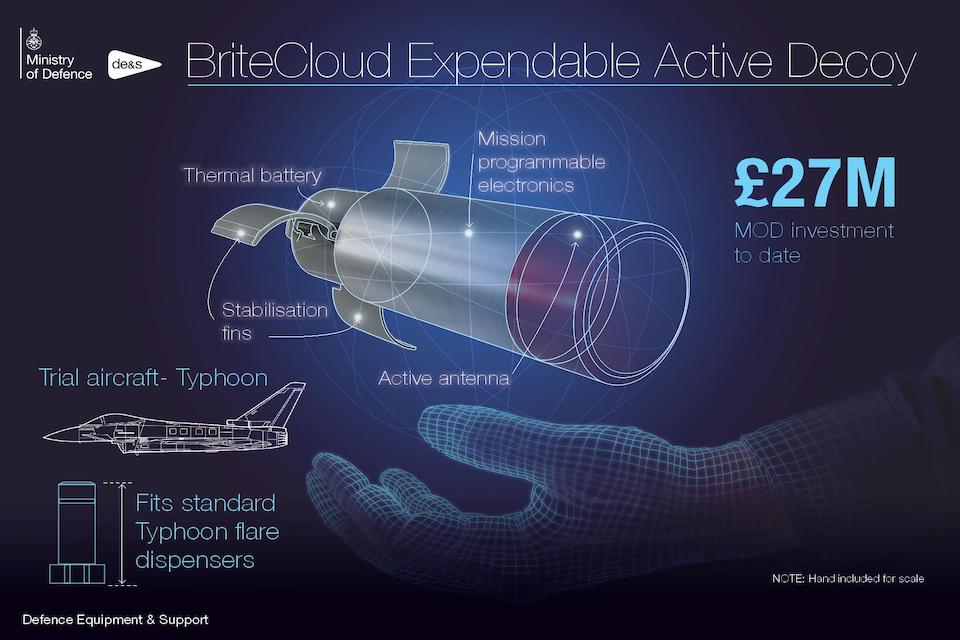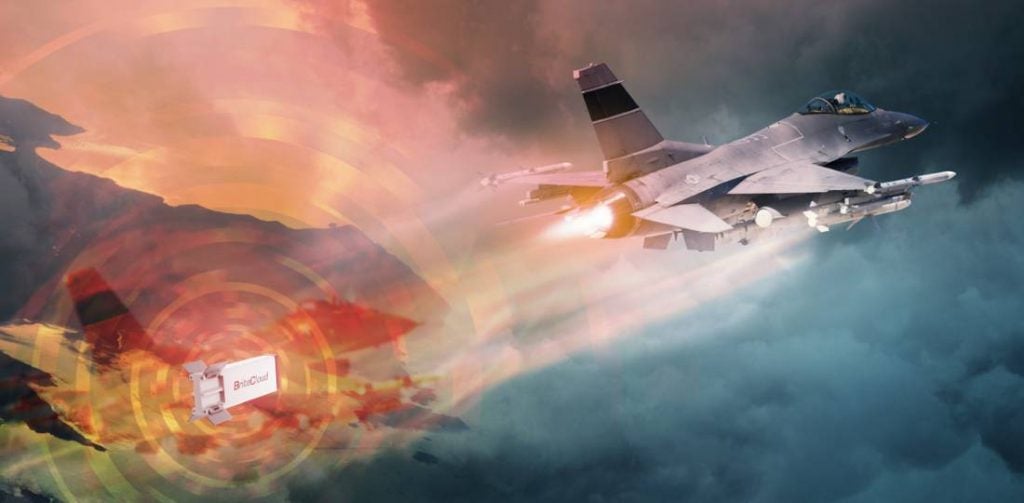BriteCloud Active Decoy Tested by the US Air National Guard
Leonardo has announced that the US Air National Guard will begin testing and evaluation of its BriteCloud 218 expendable active decoy. Already in service with the RAF, initially on the recently retired Tornadoes and shortly on the Typhoon, BriteCloud greatly improves the survivability of nonstealthy aircraft in high threat environments.
When an approaching hostile missile is detected by the host aircraft’s
Radar warning receiver (RWR) BriteCloud is programmed and ejected. The decoy fits in the same countermeasure dispenser that is used for flares and chaff thus no physical modification to the aircraft is required. Once in the air, it begins receiving enemy radar emissions through its onboard antennae then processes and transmits a false radar return in an attempt to simulate the signature of the host aircraft. If done properly the incoming missile will be fooled into identifying BriteCloud as the targeted aircraft and pursue it instead.

BriteCloud 55, the version used by the RAF, is incompatible with US chaff/flare dispensers, such as the AN/ALE-47 used on the F-16, due to a different form factor. BriteCloud 218 was designed specifically for use on American built aircraft whether in US DoD service or with export customers. Given that the F-16 is the single most numerous combat aircraft in service worldwide the potential for sales is a massive opportunity for Leonardo. The US Air National Guard (ANG) tests may open the door to wider adoption either with the USAF or the USN/USMC. Using the US ANG as the initial test body makes sense as while the other services continue to replace legacy aircraft with F-35s, the US ANG will continue to operate F-16s and F-15s long into the future. Testing is expected to take 2-3 years, with BriteCloud integration on RAF Tornadoes lasting from April 2015 to October 2018.
Without Very Low Observable (VLO) features to keep them out of the enemy’s gaze 4th generation aircraft like F-16 will need to rely on jammers and active decoys like BriteCloud to parry missile volleys. However, even VLO 5th generation aircraft need decoys as a contingency. F-35 is already planned to be equipped with the AN/ALE-70 towed decoy by BAE, though this doesn’t rule out BriteCloud integration. Evidently, towed and free-falling decoys are complementary rather than competitive systems despite covering the same frequency bands. Before their retirement, RAF Tornadoes carried both BriteCloud and Ariel towed decoys. Typhoon will also be equipped with both once BriteCloud integration is complete.

Towed decoys are generally more capable since they remain connected to the host aircraft through a fiber-optic capable. This allows the decoy to be continually fed information from the host aircraft’s RWR rather than needing its own receiver and also gives it access to more powerful computers. This is key since a huge part of electronic warfare is using processor-intensive formulas to put together a convincing radar return.

